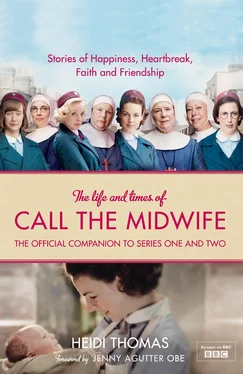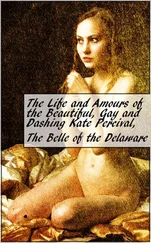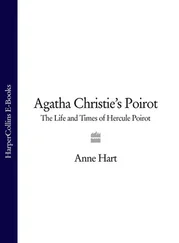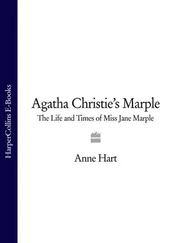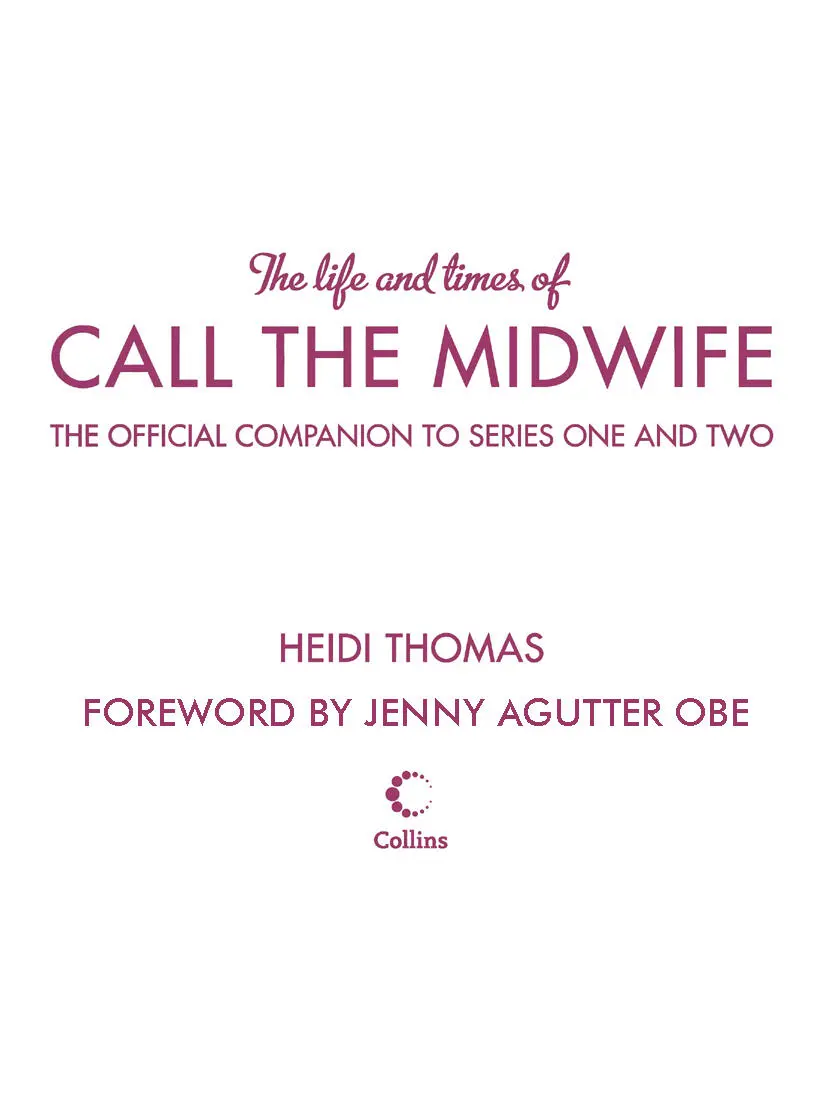
CONTENTS

COVER
TITLE PAGE
FOREWORD by Jenny Agutter OBE
INTRODUCTION by Heidi Thomas
CHAPTER 1 BIRTH
PROFILES THE NURSES
CHAPTER 2 FASHION
CHAPTER 3 Beauty
Call the Midwife Diaries part 1 
CHAPTER 4 FAITH
PROFILES THE NUNS
CHAPTER 5 HEALTH
Call the Midwife Diaries part 2 
CHAPTER 6 HOMES
CHAPTER 7 Food
CHAPTER 8 STREET LIFE
CHAPTER 9 MEN
PROFILES THE CHAPS
CHAPTER 10 CHRISTMAS
Call the Midwife Diaries part 3 
CAST LIST
THE ARCHITECTS
ACKNOWLEDGEMENTS
COPYRIGHT
ABOUT THE PUBLISHER
FOREWORD

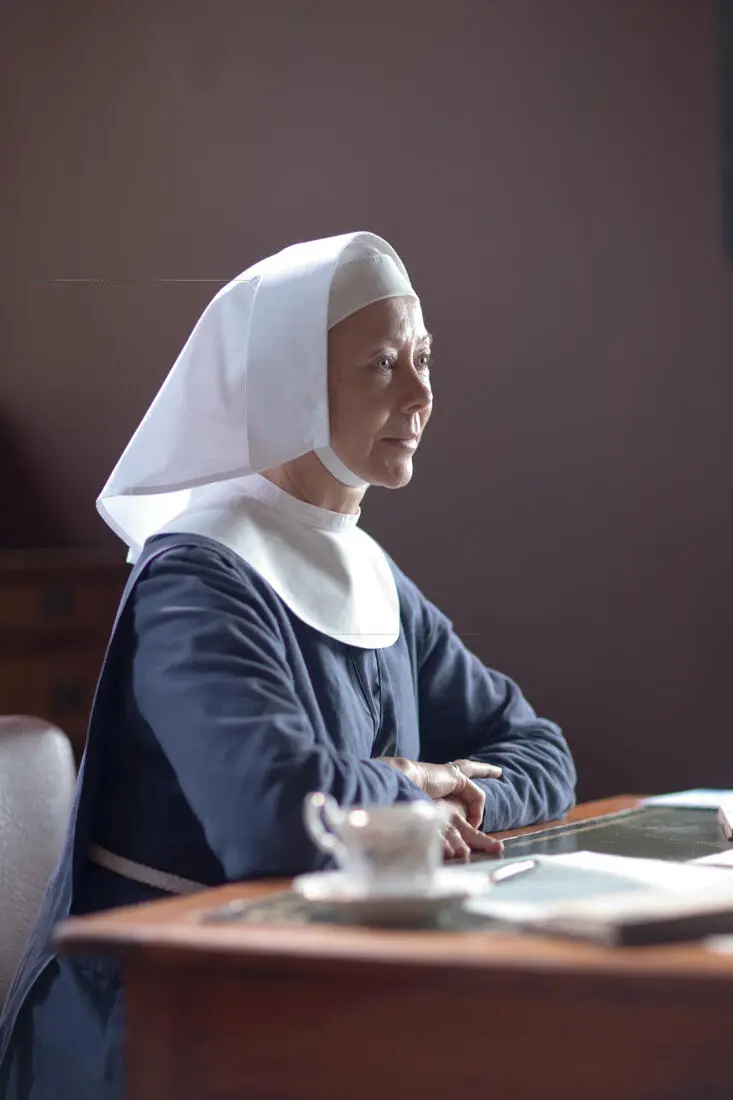
JENNY AGUTTER OBE
I was born in Somerset in the 1950s. My father told me recently that he was present at my birth, but as men were not allowed into the delivery room at the time it was more likely that I had arrived, been cleaned up, and presented to him as a neat mewling bundle. Although my parents did not share the same faith, they gave me a religious upbringing. Decades later my son was born on Christmas Day, which meant I had shifts of midwives attend his birth. I thought I knew about the period, religion and midwives and would be well prepared to play Sister Julienne in Call the Midwife , but I had a lot to learn.
Time was set aside before filming the first series to learn how to appear adept at being midwives, particularly at handling newborn babies. Serendipitously, I met the real-life Julienne’s niece, who gave me valuable insight into her aunt’s personality and lent me some of her drawings and letters. She was a talented amateur watercolourist who always found time to send painted cards and notes to family and friends, never forgetting an anniversary or birthday. I discovered a deceptively strong-willed woman with a great sense of humour who enjoyed people with all their faults, always finding the best in them.
The more I discover about the nuns who worked in the East End, the more my respect grows for these women whose faith gives them an unquestioning sense of purpose. They served their community, particularly the women, at the most vulnerable and intimate time in their lives. Childbirth is always a miracle and midwives are indeed unsung heroes.
My parents went out of their way to make sure that my brother and I were not burdened with any of the concerns and fears they had grown up with. We owe so much to the indomitable spirit of those who lived through the turmoil of war, and worked hard to rebuild our world. The squalid and poverty-stricken area of Poplar and London’s docklands was heavily bombed and there was no money to repair the excessive damage or to re-house the many families who had lost their homes. Subsequently, the tenements that should have been torn down and rebuilt remained occupied and overcrowded.
Because many of the characters in Call the Midwife are based on real people who lived and worked in the East End, all the cast feel a keen responsibility to serve them well. They are vividly depicted by Jennifer Worth in her bestselling memoirs, and brilliantly shaped for the series by Heidi Thomas, and have been a pleasure to get to know and play. You always hope that an audience will enjoy work that you feel proud of. I was delighted and amazed by the diverse audience we reached and find myself being stopped by people of all ages and backgrounds who want to let me know how the series has affected them.
Costumes and set design play a vital part in creating the mood and helping the actor believe in what they are doing. The creative team working behind the scenes on Call the Midwife have captured the period meticulously, paying attention to every detail. As well as sourcing and recreating the furnishings of the time, the production team found small personal items from the fifties with which to adorn tables, cupboards and fireplaces: books filled with savings stamps, old postcards, magazines to inspire the homemaker with advertisements featuring women, neat and feminine with their narrow waists and big skirts, seemingly unaware of the changes that were beginning to give women an equal place in society. Each chapter of this book reveals just how this flawless attention to detail was brought to life.
Working on the series has given me an insight into the extraordinary decade that followed the war, shown me what faith is capable of, and given me the chance to better understand the delicate and under-praised work of the midwife. It has been an exciting adventure, one I am honoured to be able to share.
INTRODUCTION

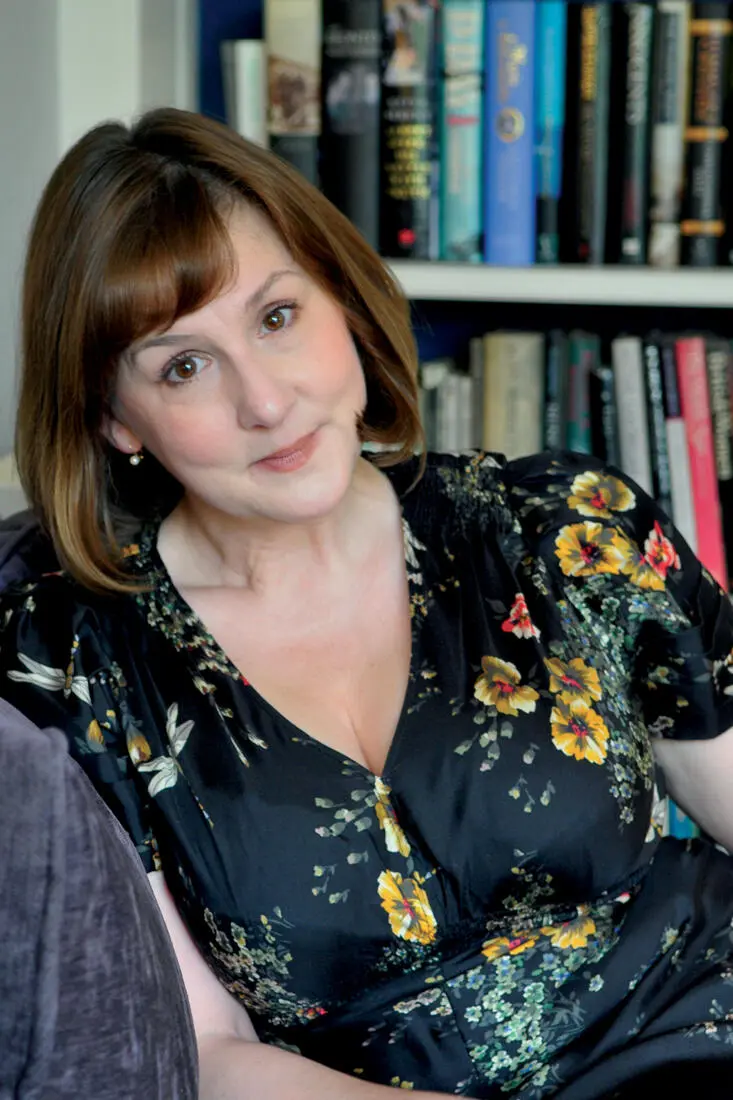
HEIDI THOMAS
(© Cath Harries)
First encounters always linger in the mind. The older I get, the more I appreciate the way the mind seems to take a mental snapshot of the moment. I can still envisage the first time I walked through the doors of my grammar school, the first time I saw my husband, the first time I clapped eyes on my baby’s face.
I was initially approached about the book by Pippa Harris of Neal Street Productions, who believed the memoirs of the then unknown Jennifer Worth might have potential as a television series. I was not – I am ashamed to say – especially intrigued. Fresh from the joyful experience of writing the BBC classic serial Cranford , I was passionate about finding new books to adapt, but didn’t think this would fit the bill in any way. It was not set in my favourite century (the 19th) and, even more importantly, its author was alive and well and living in Hemel Hempstead.
Adapting another writer’s work for the screen is a fraught and delicate business – changes are inevitable, and I have a keen conscience. I shudder at the thought of causing distress or offence to the person whose imagination, hard work and talent have brought a book about. While I was writing the scripts for Cranford , sometimes the only thing that kept me going was the thought that Mrs Gaskell had been dead for many decades. Meanwhile, Jennifer was not only still with us, but had based Call the Midwife on her own, deeply personal experience of working in the East End in the 1950s. I imagined that even the smallest details would be important to her, and that any alterations might prove painful.
Читать дальше
